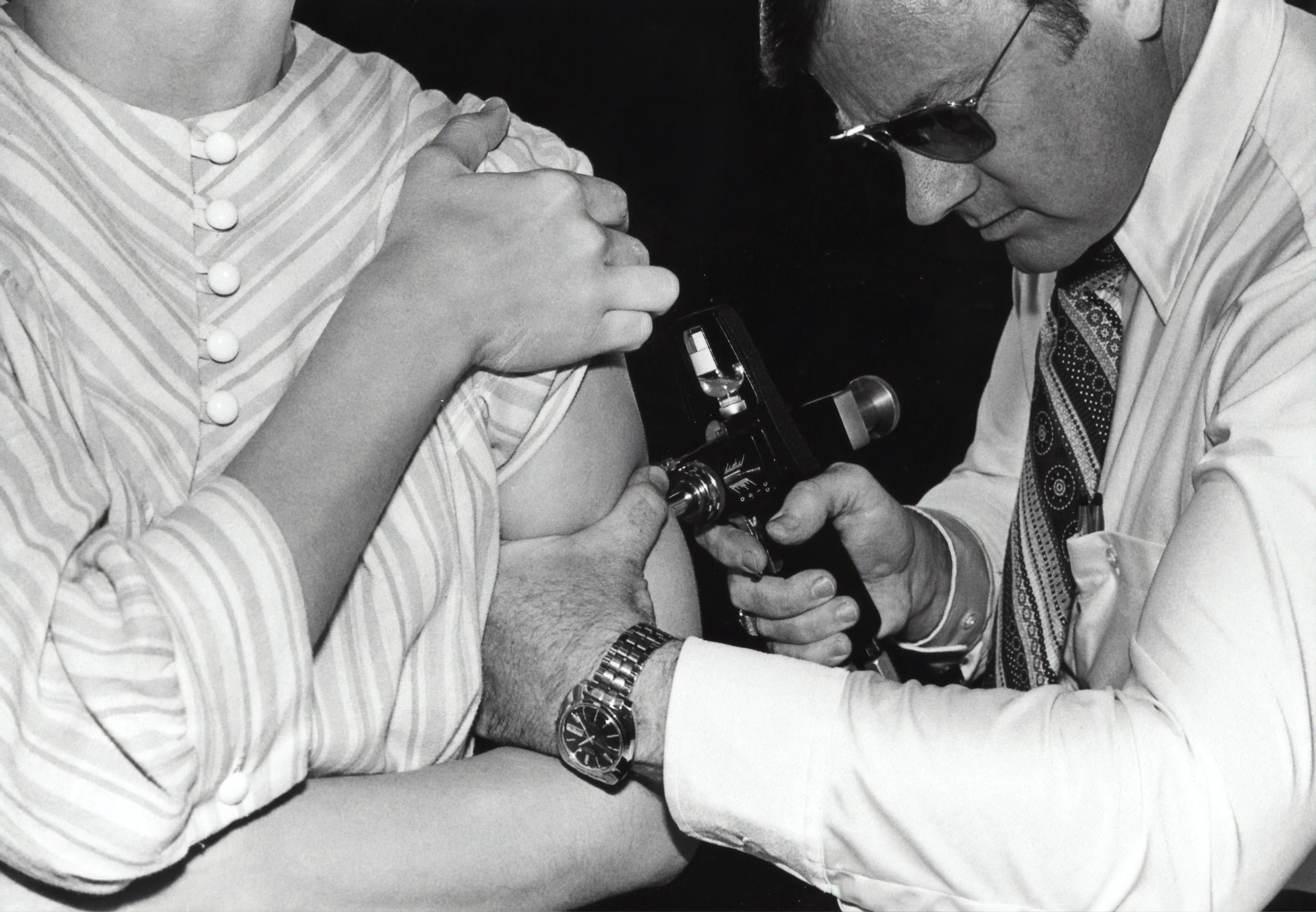
Polio Vaccine: The Long Road
Polio Vaccine: The Long Road by Marjorie Farrington December 3, 2021
Dr. Jonas Salk’s polio vaccine changed it all. After the drug was declared safe and effective,
a nationwide campaign quickly followed, and by 1962, the number of polio cases dropped from several hundred thousand to a few dozen. When polio crippled 22,000 people in 1952, doctors put an end to the worst U.S. epidemic of the 20th century with a simple vaccine.
In 1952, with polio cases topping 3,000 a week, the National Foundation for Infantile Paralysis announced that it would award $1 million to any person who could produce an effective polio vaccine. Salk won a competition among researchers in the foundation’s ‘‘polio pioneers’’ program, and he worked quickly to prepare for mass production of the vaccine.
Today, polio has been eradicated in America and most of the West. Few people under age 50 have ever seen even a case of it.
**First U.S. Polio Epidemic 6/17/1894
The first major documented polio outbreak in the United States occurred in Rutland County, Vermont. Eighteen deaths and 132 cases of permanent paralysis were reported.
Charles Caverly, MD, noted the appearance of acute nervous system disease in the county. He was one of the first physicians to recognize that polio could occur with or without paralysis. He did not assume, however, that the disease could be spread from person to person. The contagious nature of polio would be established in 1905.
“The element of contagium does not enter into the etiology either. I find but a single instance in which more than one member of a family had the disease, and as it usually occurred in families of more than one child and as no efforts were made at isolation, it is very certain that it was non-contagious.”
—Charles Caverly, MD, Infantile Paralysis in Vermont
Information from: history of vaccines
In the 1940s, Yale’s Dorothy Horstmann, MD solved a puzzle that would lead to the first polio vaccines


 How to resolve AdBlock issue?
How to resolve AdBlock issue? 